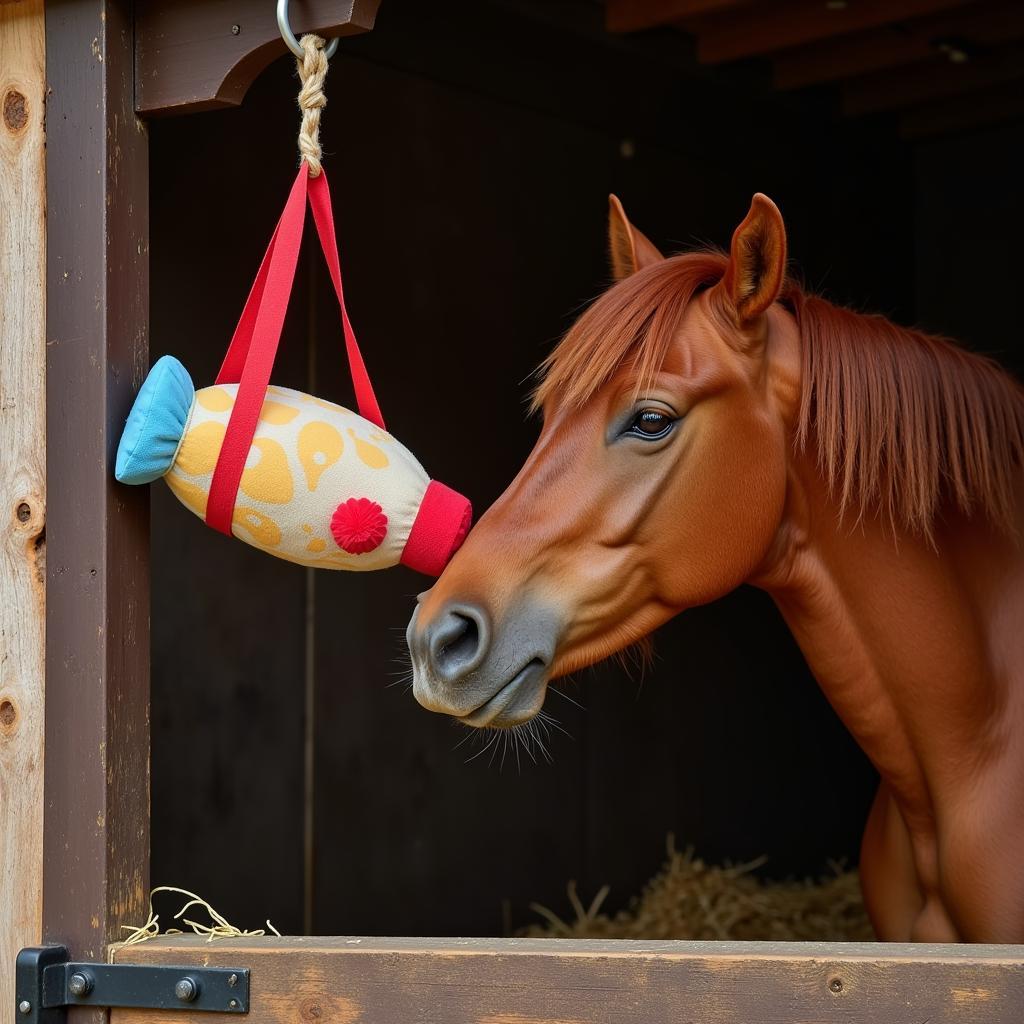Keeping your horse calm and cool is crucial for their well-being and your safety. A relaxed horse is more receptive to training, less prone to injury, and generally a joy to be around. This article explores various methods and techniques to help you achieve equine serenity, covering everything from environmental adjustments to training practices.
Understanding the Importance of a Calm and Cool Horse
A stressed horse can exhibit a wide range of behaviors, from nervous pawing to outright aggression. These behaviors not only make handling difficult but also compromise the horse’s physical and mental health. Horses are prey animals, and their natural instinct is to flee from perceived danger. Therefore, it’s essential to create an environment and routine that minimizes stress and promotes relaxation. This starts with understanding your horse’s individual personality and triggers. Some horses are naturally more anxious than others, while some might become agitated by specific stimuli like loud noises or sudden movements. By recognizing these factors, you can tailor your approach to calming your horse effectively.
One way to create a secure environment is with a well-designed stable area. Consider a horse curtain for added privacy and to minimize drafts, which can contribute to anxiety.
Environmental Factors that Contribute to Calmness
The horse’s environment plays a significant role in its emotional state. A chaotic or unpredictable environment can lead to stress, while a peaceful and consistent one fosters calmness. Providing ample space for movement and social interaction is essential. Horses are herd animals, and isolation can be a major source of anxiety. If possible, allow your horse to interact with other horses in a safe and controlled manner.
Ensure that your horse’s stable is well-ventilated, clean, and free from excessive noise. Consistent feeding schedules and access to fresh water are also crucial for maintaining a calm temperament. Providing enrichment, such as toys and slow feeders, can also help alleviate boredom and prevent anxious behaviors.  Horse Playing with a Stable Toy
Horse Playing with a Stable Toy
A lycra horse hood can also help some horses feel more secure and less reactive to environmental stimuli.
Training Techniques for a Calm and Cool Demeanor
Training plays a vital role in shaping a horse’s behavior and promoting calmness. Consistency and positive reinforcement are key. Horses respond well to clear communication and predictable routines. Avoid harsh training methods, which can increase anxiety and create a negative association with handling. Focus on building trust and rapport with your horse through gentle and patient interaction.
Start with groundwork exercises that focus on desensitization and habituation. Gradually introduce your horse to new stimuli and situations, allowing them to adjust at their own pace. Reward calm behavior with praise and treats, reinforcing the desired response. Consider incorporating relaxation techniques, such as deep breathing exercises and massage, into your training routine.
“Patience and consistency are crucial when training a horse for calmness,” advises equine behaviorist Dr. Amelia Hartman. “Building a strong foundation of trust through positive reinforcement is essential for long-term success.”
Nutritional Considerations for a Calm Horse
Diet can also influence a horse’s temperament. Ensure your horse receives a balanced diet that meets their nutritional needs. Avoid sudden changes in feed, as this can upset the digestive system and contribute to anxiety. Consult with an equine nutritionist to determine the optimal feeding plan for your horse’s age, breed, and activity level. Certain supplements, such as magnesium and calming herbs, may also be beneficial for horses prone to anxiety, but it’s always best to consult a veterinarian before introducing any new supplements.
Remember, providing a horse pellet as a supplemental feed can ensure your horse is receiving consistent nutrition.
Recognizing and Addressing Underlying Health Issues
Sometimes, what appears to be behavioral issues can stem from underlying health problems. If your horse exhibits sudden changes in behavior, such as increased anxiety or aggression, it’s essential to rule out any medical causes. Consult with a veterinarian to ensure your horse is healthy and to address any potential medical conditions that may be contributing to their anxiety.
“Never underestimate the impact of pain or discomfort on a horse’s behavior,” warns Dr. James Riley, an experienced equine veterinarian. “A thorough veterinary examination is crucial for identifying and addressing any underlying health issues that may be contributing to anxiety.” Ensuring your horse’s health is paramount, even for big horses breeds, who may require specialized care.
Conclusion
Achieving Calm And Cool For Horses involves a holistic approach that encompasses environmental management, training techniques, nutritional considerations, and veterinary care. By implementing these strategies and prioritizing your horse’s well-being, you can create a harmonious partnership built on trust and understanding. Remember that patience and consistency are key to achieving long-term calmness in your equine companion.
FAQ
- What are the signs of a stressed horse?
- How can I introduce my horse to new situations without causing anxiety?
- What are some common calming supplements for horses?
- How often should I train my horse for calmness?
- What are the benefits of a calm horse?
- How can I create a calm environment for my horse?
- What should I do if my horse suddenly becomes more anxious?
Further Reading
When you need assistance, please contact us:
Phone: 0772127271
Email: [email protected]
Address: QGM2+WX2, Vị Trung, Vị Thuỷ, Hậu Giang, Việt Nam.
We have a 24/7 customer service team.